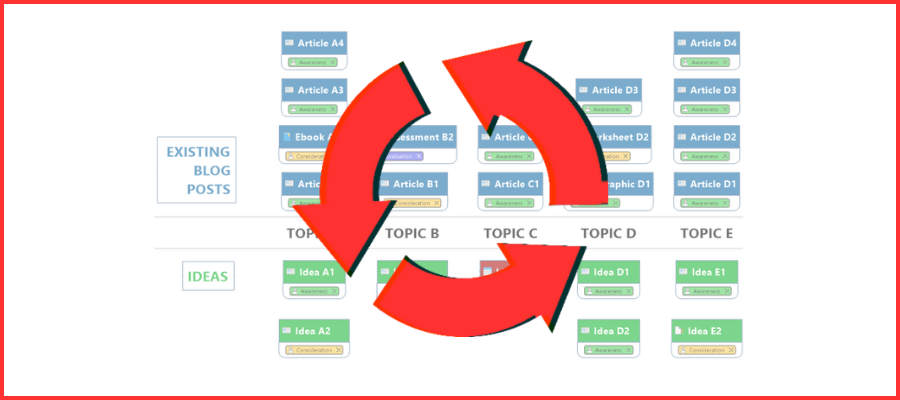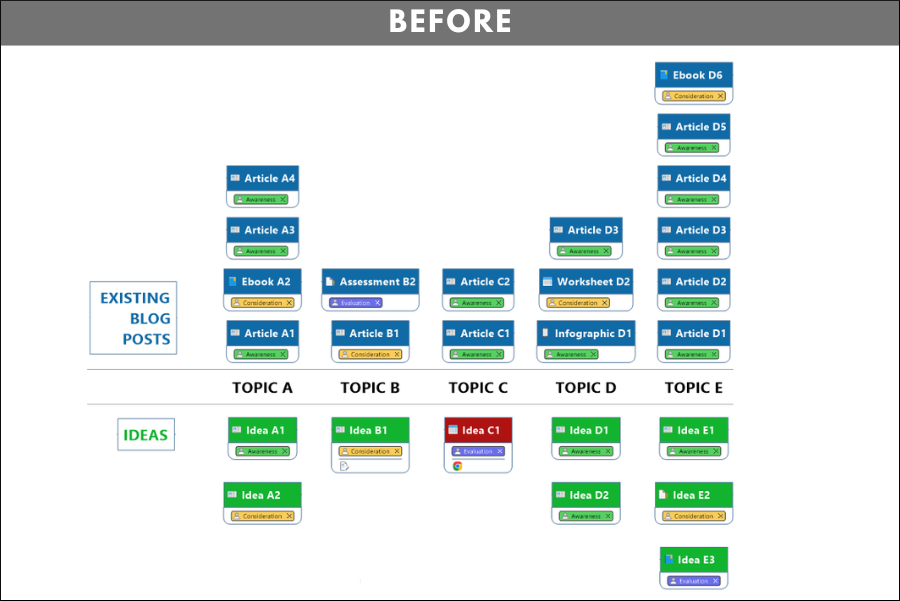
Has this ever happened to you? You look at a mind map and say to yourself, “That’s not from my field of interest or profession. It doesn’t apply to me.”
But by doing this, you may be missing a major opportunity to adapt it to your needs – potentially creating a really valuable tool that improves your work.
When you look at a mind map or diagram, you should get in the habit of asking yourself, “how else can this be used?“
A case in point is the visual content audit I published last week. If you ask yourself the question I posed at the beginning of this article, you’ll start to see other possible uses for it.
If you generalize what this diagram shows, it’s actually displaying present and future states. That reframe opens up a world of ideas, like these three:


A stakeholder position map: The line of words in the center could list the issues that concern your organization’s stakeholders. The areas above and below the line could be used to capture which stakeholders are on each side of the issue.
A product planning map: The horizontal line in the center of the diagram could display a variety of customer needs. The top half of the map could display an “inventory” of current products and services. The area below the line could be used to brainstorm new product ideas that could provide value to customers who have those needs.
A work in progress inventory report: The center of the diagram could list the products your organization produces. The top half of the diagram could display projects or orders that still need to be completed. Conversely, the bottom half could display completed projects or orders.
A kanban board: If you remove the top section of the visual content audit diagram, leaving only the headings and the topics below them, you could use it as a Trello-like kanban board to track the current status of multiple projects. This example shows that you can “throw away” part of the existing mind map or diagram if you need to in order to modify it to meet your needs.
How to repurpose visual diagrams and mind maps
Use first principles.
Ask yourself: What are the key relationships this mind map or diagram is trying to show?
Deconstruct it to understand its underlying purpose. Once you have discerned that, you’ll be able to see different potential uses for it.
Remember: In the case of the visual content audit, its core purpose is to show before and after states.
What about a few other examples?
A meeting mind map lists all of the people, resources and arrangements needed for an important gathering. Once you understand that, it’s easy to see how such a mind map could be re-purposed to plan an event, a move to a new house, a job change and other number of similar situations where a small number of types of information need to be catalogued and tracked.
A project mind map lists objectives, resources, implementation steps and milestones to track its progress. Reframing it could yield a goal-setting mind map in which you organize the knowledge, skills, education, mentors and resources you need to achieve an ambitious goal. Goal-setting, at its most basic level, is simply a specialized type of project.
The next time you view a mind map, don’t immediately dismiss it as irrelevant to your needs. Invest some time mentally deconstructing it to discern if there are any other uses for which it could be adapted!

Leave a Reply